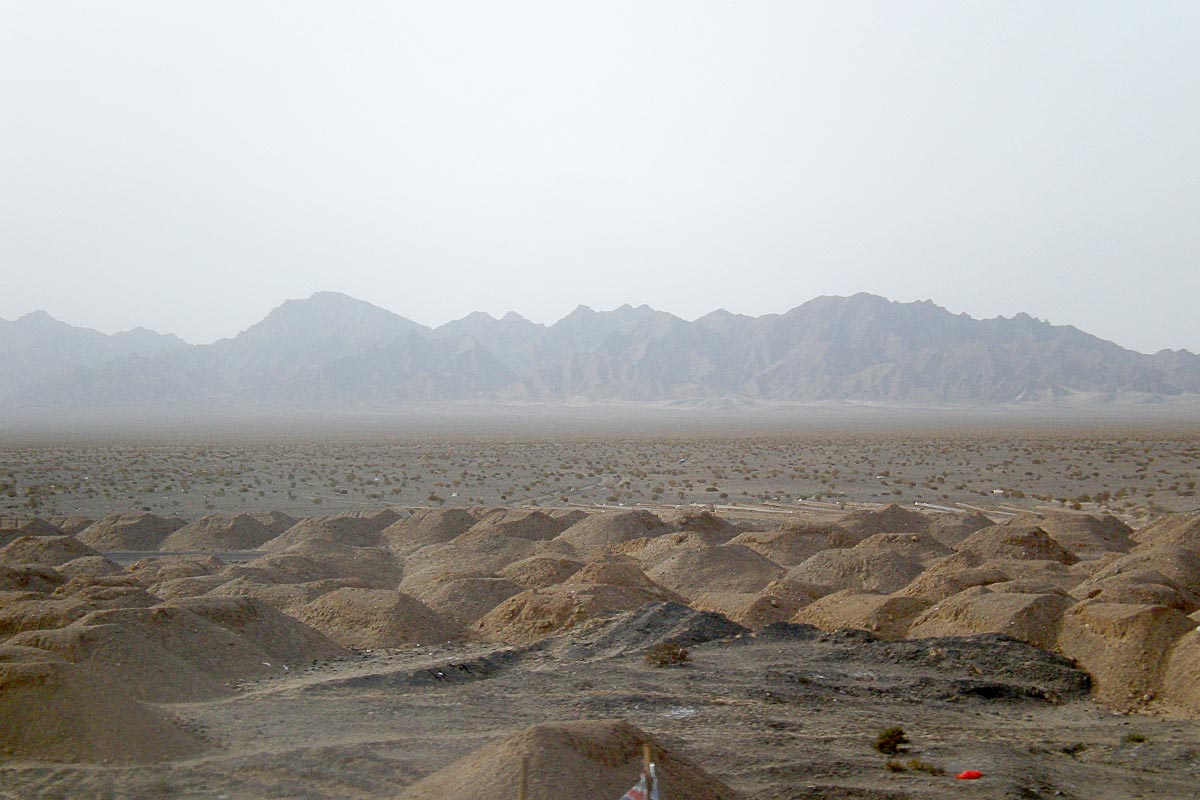
Wake up in the morning
And I raise my weary head
Got an old coat for a pillow
And the earth was last night's bed
—Jon Bon Jovi
Western China is a land of crossroads and intersecting cultures – and the distinct sensation that you’re far, far away from most civilization. The dusty city of Golmud (格尔木), in the middle of nowhere in Qinghai Province, may be on a Chinese train line but might as well be on Venus.
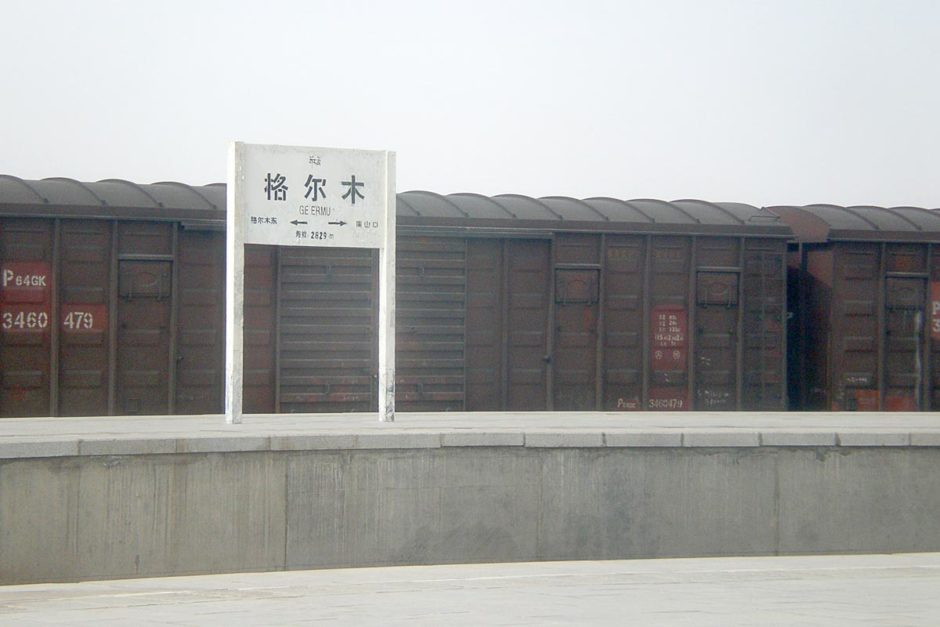
The “Golmud” sign on the train platform – at 2,829 meters above sea level.
The word “Golmud” is Mongolian; the Chinese characters are actually rendered in English as “Geermu” (guh ur moo), and signs in the city are in Chinese, Mongolian, and Tibetan. Golmud is in the chilly high desert of the Tibetan plateau, surrounded by tan-colored, wind-blown rock hills and vast pebble-stewn fields.
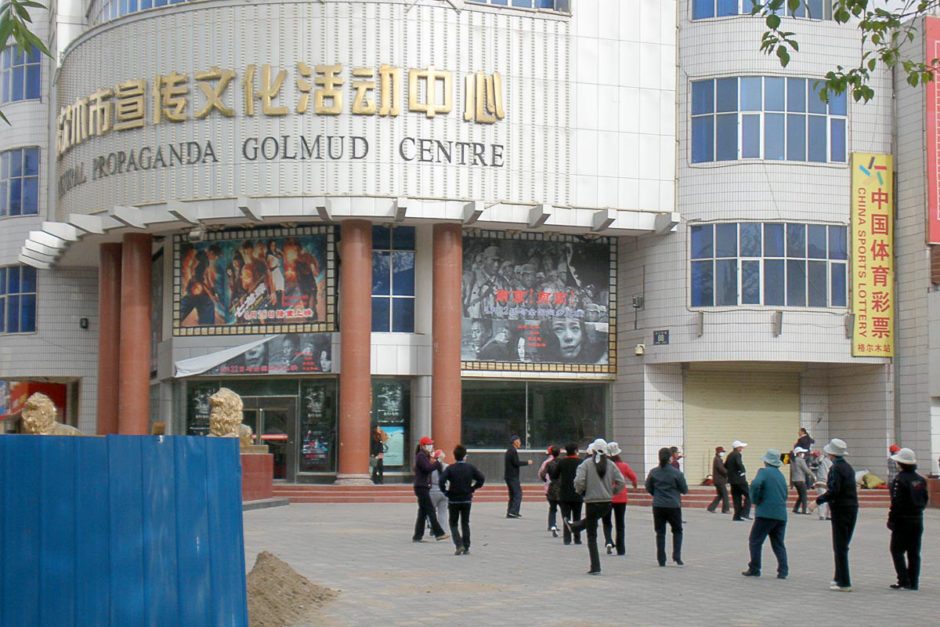
Morning exercise in front of the Propaganda Center.
Masayo and I left the city of Xining on the edge of the Plateau for Golmud on an overnight train. Crammed (happily) in our third-class sleeper beds, we yet again found ourselves on top bunks – the bottom level beds have people sitting on them outside sleeping hours, and the top-level ones are too close to the roof of the train. The middle-level beds are what we want, but we never seem to get them.
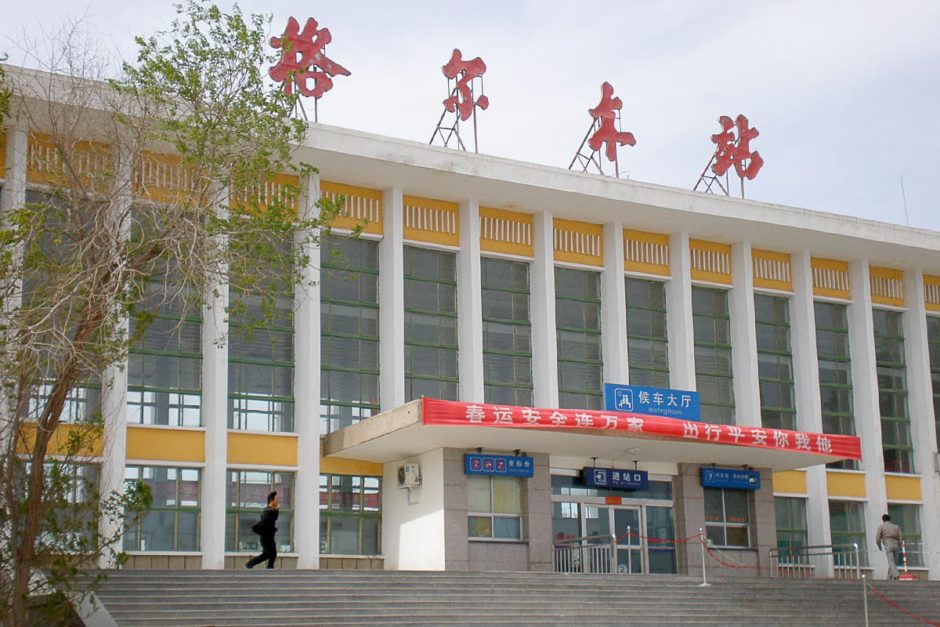
Golmud train station.
No matter though; after waking up the next morning and having a breakfast of instant coffee and noodles, we sat by a window and watched the desolate moonscape of central Qinghai pass by our steady little green and yellow train. The only civilization was the train itself, and the tracks. And the occasional incongruous construction project; they seemed to be building a highway through the low, dry hills. From where to where? we wondered.
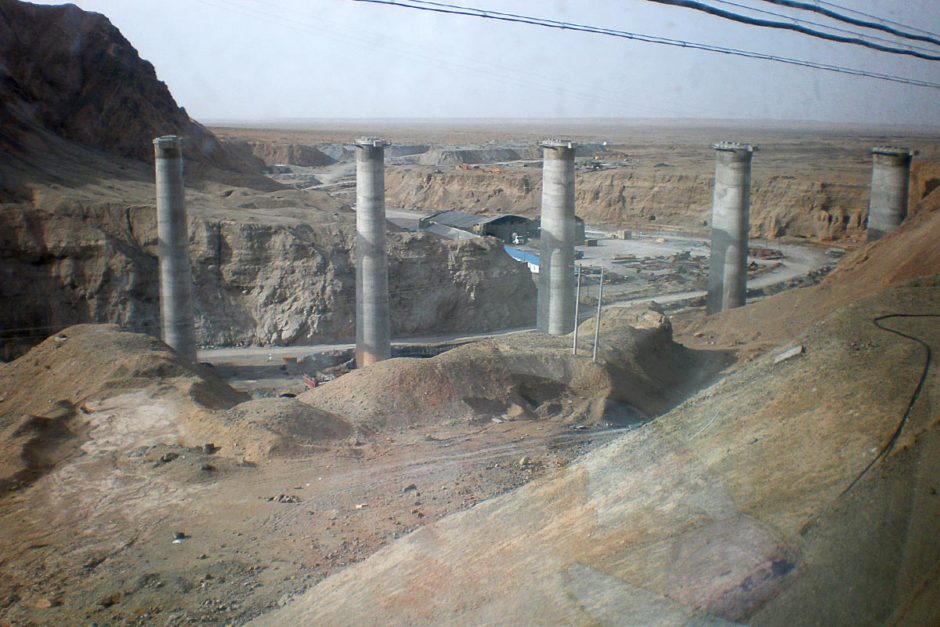
Unlikely construction project in the middle of the Qinghai desert, as seen through dingy train windows.
In Golmud itself, we few intrepid souls bounded off the train – Masayo and I seemed to be the only actual travelers, because who would come to Golmud? – and walked through the wide, empty streets into town.
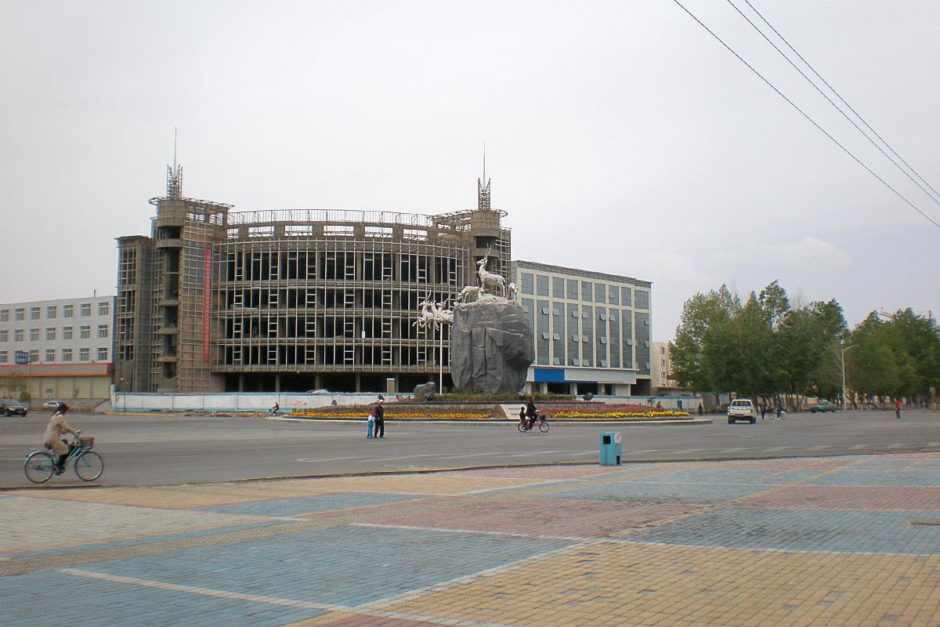
Roundabout in empty Golmud.
The first thing we saw was a road sign with four different scripts on it: Chinese and Mongolian and Tibetan and English, all arranged in a complicated design that could accommodate them all. Bleary through I was from the train ride, I asked Masayo to get a photo of me with this Silk Road evidence. Languages and scripts are a big part of travel for me; it makes places seem exotic.
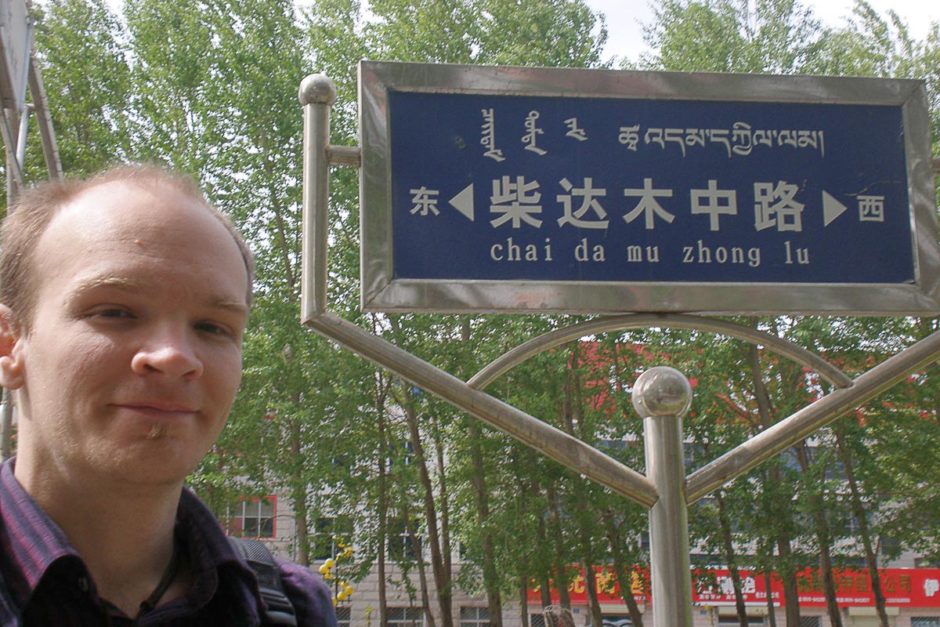
Awesome road sign, and puffy morning eyes.
We found a room at a large, cheap, but non-descript hotel called Jinlun. There was a breakfast included and it was a nice base to have for our time in Golmud. And we then proceeded to while away three days in town.
Much of our time was spent on bureaucratic Chinese matters. We needed to extend our 90-day tourist visas, and Golmud seemed like a good place to do it. It would be nice to take care of that here before going further West.
Finding the big government building in Golmud was an ordeal – we wandered the area but couldn’t find it. Eventually we stopped into a small police station to ask directions; three different officers emerged and pointed in three different directions. “Why is this so hard?” Masayo and I wondered, but finally one of the officers gave us a ride to the place in his squad car.
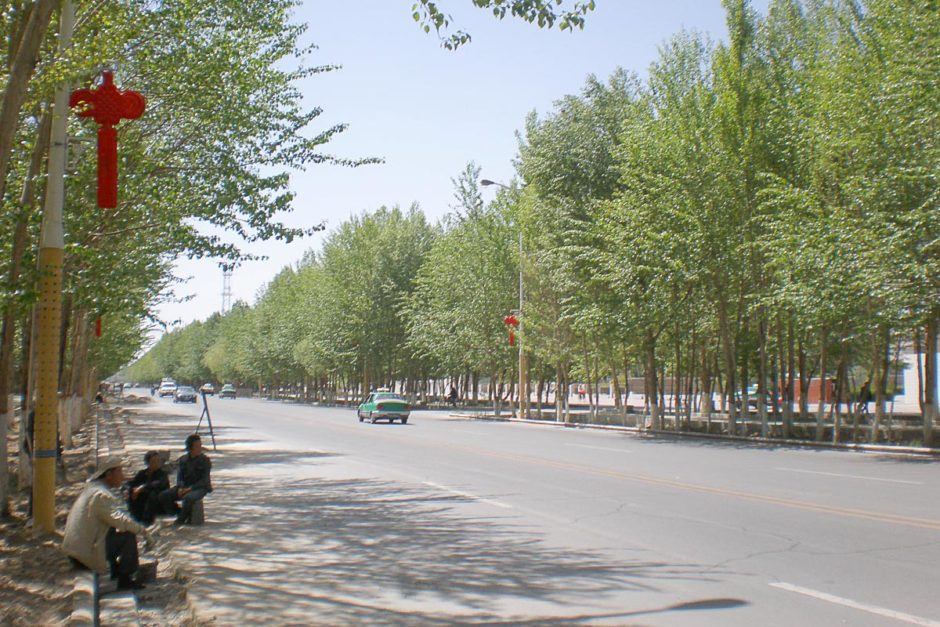
The staff at the government building said we would be better off getting our visas extended in Beijing. That meant we really couldn’t risk going further West on this trip – transportation is sparser and I didn’t want to get caught thousands of miles away from Beijing when the visas were really running out.
So we decided to go north to a town called Dunhuang, though we were told we’d need special permission if we wanted to take the bus through the desert. (The train doesn’t require a permit, but the high and wild route followed by the bus does. And the bus seemed more interesting anyway.)
So we applied for the special document that would allow us to take this bus, apparently a highly unusual thing for foreign tourists to do. I’d be lying if I said that didn’t make us a little proud.
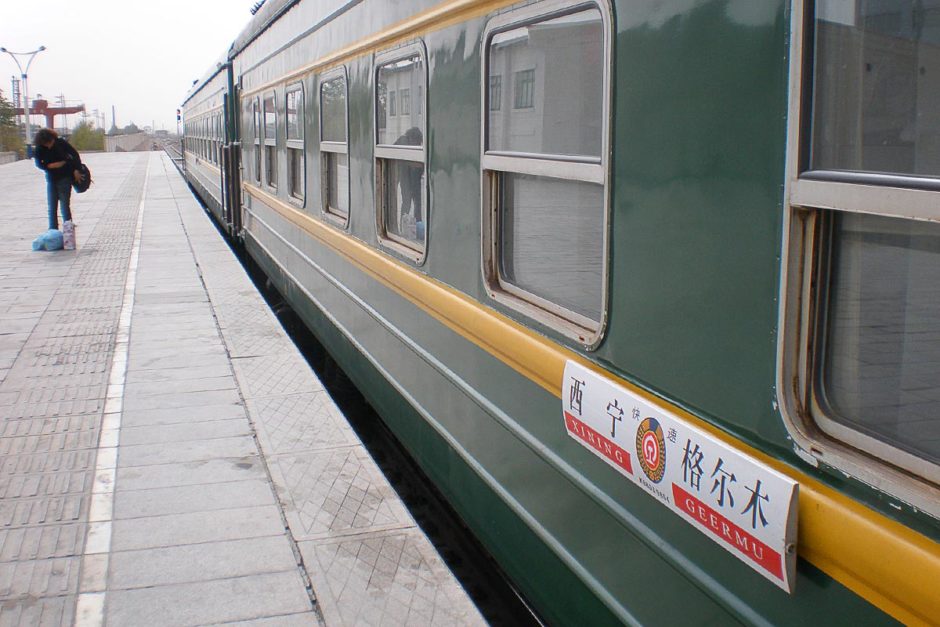
The ol’ seldom-used Xining to Golmud express.
A couple days later we had our Aliens’ Travel Permit from the People’s Republic of China: we were official! But it was good for one day only, so we had no wiggle room. I celebrated with a haircut from a woman who probably didn’t see that many foreigners in her shop on a Golmud side street.
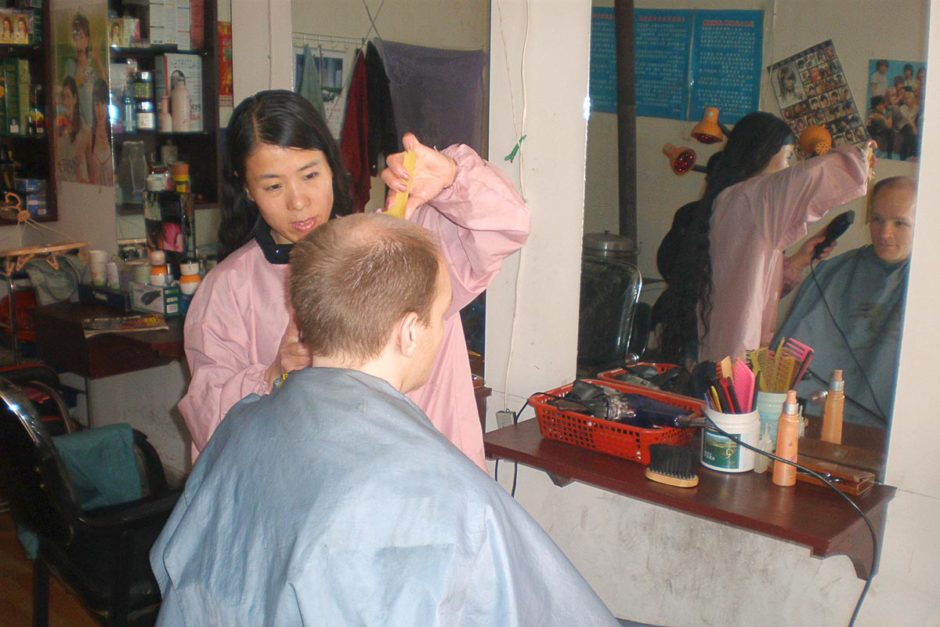
One day we took a bus ride around Golmud in an effort to see the town. It was just a local bus, and we didn’t see much besides the wide, tree-lined boulevards and the big, quiet buildings. But everywhere, the vast emptiness of the surrounding countryside lurked, often just out of sight. Right over those buildings, just through those trees, lay hundreds of kilometers of dirt and rocks and cold plateau. It makes Golmud feel like what it is: an outpost on the edge of nothing.
Diabetes report – Tomatoes and sugar
In a small eatery across from the train station Masayo and stopped in for lunch. What we ended up with was a plate of cool sliced tomatoes with sugar sprinkled all over them. This was a new diabetes challenge for me: I never use straight sugar in anything.
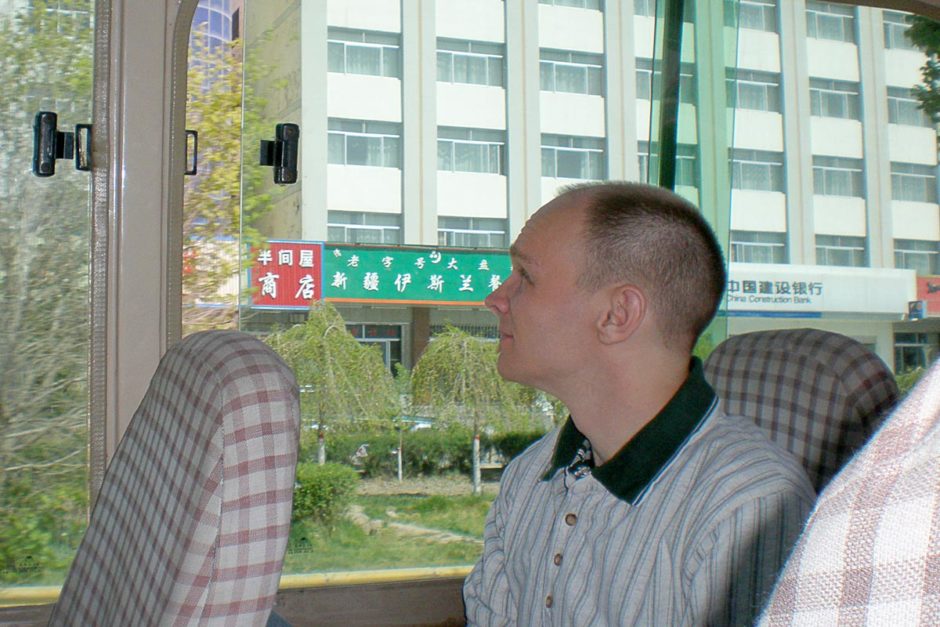
The bus around Golmud. Ho hum.
Sitting in a dark back room, Masayo and I the only customers at the thick wooden table, I injected my Humalog into my stomach and we tackled the tomatoes. They were very good, and looking out the window at the sunny sand of Golmud’s perimeter, I felt like we were eating some ancient food from eons ago. An overstatement, but it was easy to get that impression.
Blood sugar was high afterwards. But of course. So I learned this: beware raw sugar!
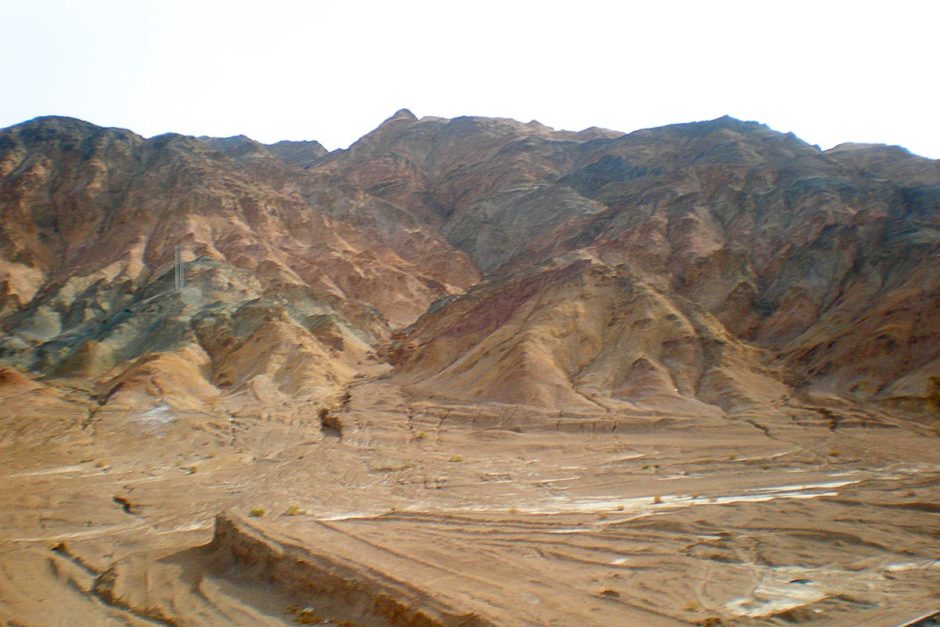
Having satisfied our curiosity about Golmud, and with our paperwork secured, we worked out bus tickets through the high desert north to a town called Dunhuang. China just keeps getting better and better with its surprises!
What’s the most out-of-the-way place you’ve ever visited?
Thanks for reading. Suggested:
- Share:
- Read next: Day 75: Through the desert to Dunhuang with special permission
- News: Newsletter (posted for free on Patreon every week)
- Support: Patreon (watch extended, ad-free videos and get other perks)

Support independent travel content
You can support my work via Patreon. Get early links to new videos, shout-outs in my videos, and other perks for as little as $1/month.
Your support helps me make more videos and bring you travels from interesting and lesser-known places. Join us! See details, perks, and support tiers at patreon.com/t1dwanderer. Thanks!
